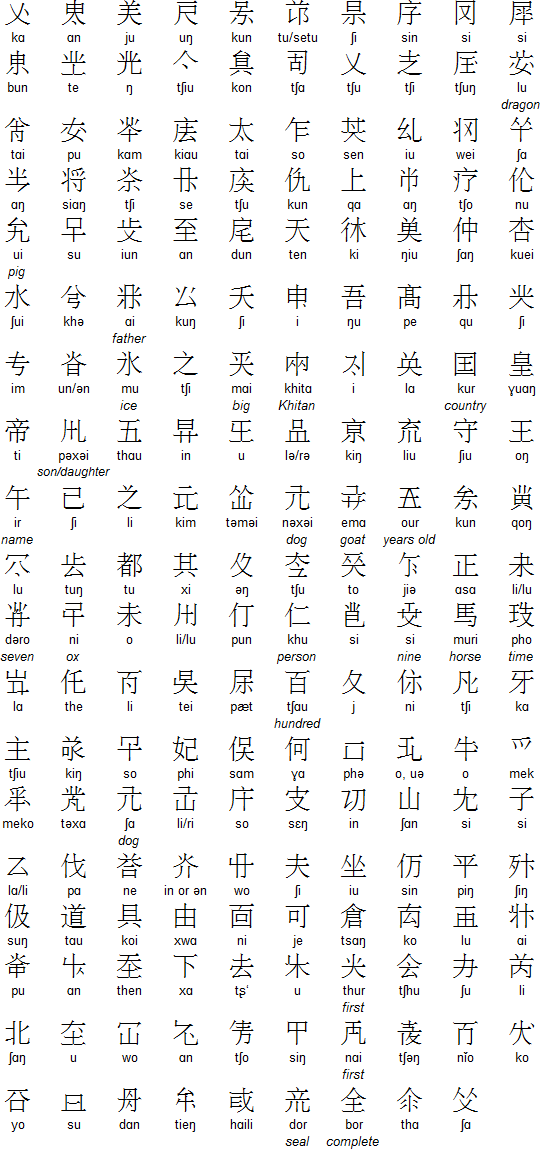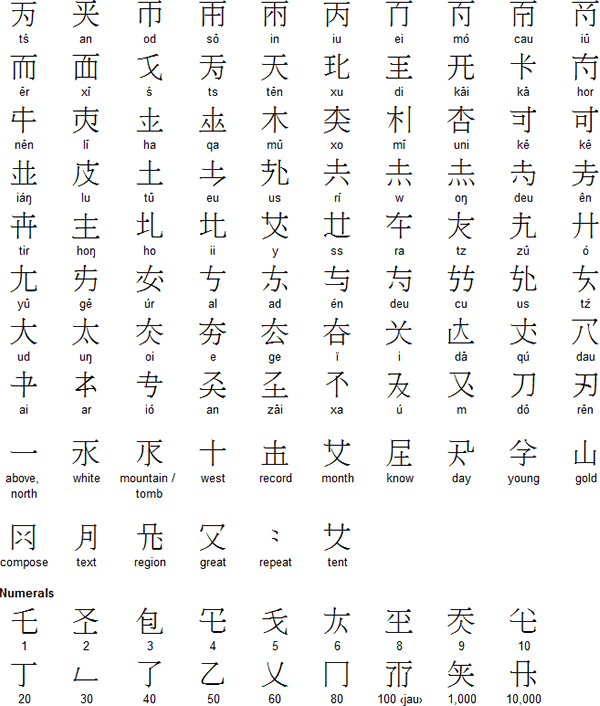Origin
The Khitan people, who dominated a large chunk of Manchuria between 916 and 1125 AD, used two different scripts - the "large script", which came into use in about 920 AD, the "small script", which was reputedly created in about 925 AD by the Khitan scholar Diela, who was inspired by the Uighur alphabet.The two scripts were used in parallel and appear to have little in common in terms of the forms of the characters and the ways they were assembled into compound characters.
Used to write
Khitan, an extinct Altaic language which was once spoken in Manchuria. The language and the Khitan people were known as 遼 (Liao) in Chinese.The "Large Script"
The "large script" was written in vertical columns running from top to bottom and from right to left. Some of the characters were taken from Chinese, while others were independent inventions.Selection of "large script" characters together with the Chinese characters on which they appear to have been modelled.

The "Small Script"
The "small script" consists of 370 characters, including logograms, syllabograms and possibly some phonograms.Selection of "small script" characters

Khitan "small script" numerals
Links
Information about the Khitan script and peoplehttp://en.wikipedia.org/wiki/Khitan_script
http://en.wikipedia.org/wiki/Khitan_people
http://www.fanaticus.org/DBA/armies/dba114.html
http://www.chinaknowledge.de/History/Song/liao-literature.html









.jpg)
.jpg)


.jpg)





0 comments:
Post a Comment
Note: Only a member of this blog may post a comment.